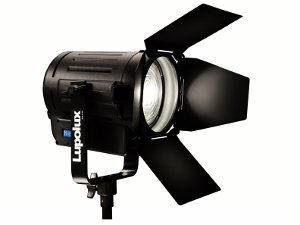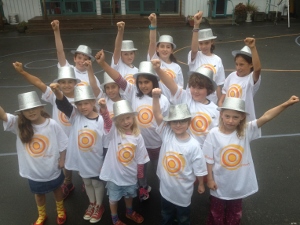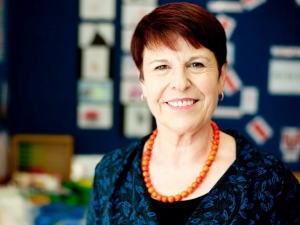Developing skills and creativity in the TV studio

 As media, in all its facets, becomes an increasingly important part of life and therefore study in New Zealand, many schools regard an on-site TV studio as a key ingredient for the development of students’ skills and creativity. However, installing a TV studio in a school involves much more than just hanging up a few lights and setting up a couple of cameras ready for action.
As media, in all its facets, becomes an increasingly important part of life and therefore study in New Zealand, many schools regard an on-site TV studio as a key ingredient for the development of students’ skills and creativity. However, installing a TV studio in a school involves much more than just hanging up a few lights and setting up a couple of cameras ready for action.
So, as Steve Reader, managing director of Adena Ltd points out, it is vital to have people with the right qualifications and experience carry out the design and installation work. His company is one of only a few in New Zealand able to do the design work for school TV studios, and about 90 per cent of its business is helping schools, he says.
“Building a TV studio is a unique situation that requires a very specific skillset. It is not like building a house, it’s more like assembling a machine; the right parts must be in the right places otherwise it won’t work properly. The only way to ensure success is to design the functional studio space first, and then wrap the building around it. It’s always much more expensive to change things after construction, so schools can save a lot of money by doing the job correctly in the first place.
“We find that whilst teaching staff know what they want to do with the equipment and architects can design a fabulous studio building, both parties are usually unfamiliar with the technical aspects of how and where the necessary equipment needs to be installed in the studio.
“For this reason schools should call a technical specialist right at the start to ensure all the skills, including the architect and the electrical engineer, are brought collectively to the table at the planning stage before the build commences. The school tells us what they want to do and we work out how it can be done and how much the equipment will cost, then we advise the architect so the critical technical aspects can be incorporated into their overall design for the building.”
In his experience, Mr Reader says he has found that when schools rely on luck instead of obtaining a proper design for the technical systems, from suitably skilled people, the resultant studio is likely to be dysfunctional, but worse still, it may also be unsafe resulting in additional costly problems.
“Safety is paramount in designing any studio, he says, but even more so in the school environment. Making mistakes is part of the learning process for all of us, so when students are learning we know they will make mistakes. For that reason we believe school studios should be designed so that students can make mistakes safely.”
An important factor, of course, is cost.
“Budgets are inevitably tight so careful studio design and equipment selection is essential to avoid a disappointing facility that will cost much more to fix than it would ever have cost to simply build it properly in the first place. We help schools select equipment that is most appropriate for education facilities from a range of high- quality, professional-grade equipment that is known to be reliable. Sometimes it may be the cheapest option, too; however, the decision should never be made on price, but on fitness for purpose.”
As an education specialist, Adena has been in business over 25 years and in addition to its consultation and design services it supplies schools with all the technical and backstage items for theatre and media studies.
Gencom Technology
With a history of more than 40 years providing expertise and technology solutions to the New Zealand television broadcasting industry and AV market, Gencom Technology is keen to extend its services within the education sector.
Already involved at the tertiary level with institutions such as AUT and Wintec, the company sees the growth of AV, TV and communication technology in schools as an opportunity to offer the benefits of its experience to primary, intermediate and secondary teachers and students.
Gencom has a range of products particularly suitable for use in schools, and is happy to recommend equipment appropriate to each school’s requirement. This includes cameras, lights, vision mixers, tripods, in fact everything teachers and students need to set up and run their studio successfully. Products are sourced from the world’s top manufacturers of broadcasting and AV equipment, including well-known brands like Sony, Panasonic, JVC, Samsung, and Roland. There are many options at appropriate price points for an academic budget, and Gencom can introduce customers to a financial lending service, for which schools automatically get approval.
For those who want to get started simply and quickly, Gencom offers several packages that are designed to work together to offer the best combination of capability and ease of use at a range of price points. For a school that is ready to set up a complete TV studio, Gencom will get the ball rolling with its consultation design service. In consultation with the school, the company’s experts will develop the design of the studio, and then provide CAD drawings from which it will be built.
Rapid developments in technology mean video content can now be streamed into the classroom via any device, from desktop computer to tablet or smartphone, and once the TV studio is up and running Gencom’s AV specialists will help teachers and students learn the techniques of streaming, although, as Gencom’s head of operations for New Zealand David Barnard says, with technology, “Kids know instinctively what to do”.
“One of the great things about this new technology is that it has become much more intuitive to use. Kids are already learning early how to interact with touchscreens, and the basic concepts of video production, just using smartphones and tablets,” Mr Barnard says.
” With many of the same features and interface elements integrated into these systems, they can pick them up and they already know the basics of how to use them. As a result, kids can quickly brush aside the mechanics of the tools and get to what’s important – learning how to communicate their ideas.”









